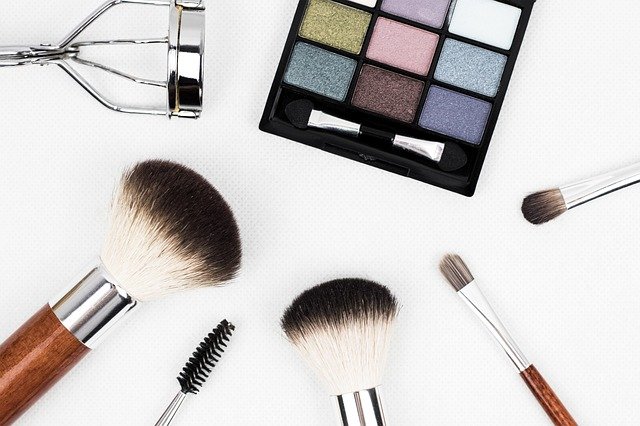Difference Between Durable and Non Durable Goods
Consumption is rapidly changing as growing number of people throughout the world strive to acquire the greater number and range of products available. This is because global consumer goods industry and the international retail companies are constantly changing. The consumer goods can be categorized as durable and non durable goods. FYI, consumer goods refer to those goods which can be used for final consumption. The distinction between durable and non durable goods is purely arbitrary. Both the terms are pretty much self explanatory. Durable goods are those which can be used several times, whereas non durable goods are those typically meant for single use only.

What is Durable Goods?
Durable goods, as the name suggest, are long-lasting goods that are able to last for a really long time without losing is primary functionality. These are a category of tangible products that can withstand the test of time and can be used several times before they start to deteriorate. Durable goods can easily last a couple of years without any significant damage, so they are also called as consumer durables. They can be used repeatedly and their utility is not exhausted by single use; in fact, it yields utility over time. For example, products such as cars, furniture, appliances, consumer electronics, tools and equipment, sporting goods, jewelry, semiconductors, etc., come under the category of durable products that do not wear out quickly and easily. These products have a greater lifetime than three years, or even more in case of heavy-duty products such as furniture, cars, machinery, etc.

What is Non Durable Goods?
Unlike durable goods, non durable goods are not meant for repeated use and in fact, they start to wear out after the first use itself. Non durable goods are soft goods that can be used only once and their utility is exhausted after the first use. These are goods that are intended to be used for a very short period of time. According to the United States Bureau of Economic Analysis, non durable goods are those considered to be used within three years and must be bought again in succession for use. These are also called consumable goods because they cannot be consumed more than once. Examples of non durable goods are sweets, packaged foods, cosmetics, beverages, office supplies, tobacco, clothing, footwear, light bulbs, detergent, etc. Unlike durable goods, these are generally not rented and can be only bought. And they have a very limited lifespan of less than three years.
Difference between Durable and Non Durable Goods
Definition
– Durable goods are a category of tangible products that can withstand the test of time and can be used several times before they start to deteriorate. These are long-lasting products that last for a really long time (more than three years) without losing its ability to function. Non durable goods, on the other hand, are soft goods with a limited lifespan meaning they last no longer than three years. These are goods that are intended to be used for a very short period of time.
Demand
– Demand is usually classified into demand for durable and non durable goods. Because durable goods can be used repeatedly, their demand usually increases during economic growth which directly accounts for increasing number of purchases. However, during recession, the demand of durable goods tends to go down and so does the number of purchases. Hence, they are considered a good economic indicator. However, the demand for non durable goods remains constant throughout economic growth and setback. Consumers normally purchase the same amount of non durable goods as durable goods, during both recession and growth.
Use
– The use of durable goods are not limited to single use only; in fact, they are long-lasting goods that can withstand the test of time without losing their functionality. Durable goods can be used several times, usually more than three years, before they start to lose their utility. Non durable goods, on the other hand, are not meant for repeated use. In fact, they can be used only once and they lose their ability to function after first use. They tend to be useless after first use.
Example
– Products such as cars, furniture, appliances, consumer electronics, tools and equipment, sporting goods, jewelry, semiconductors, etc., come under the category of durable products. These are heavy duty products that do not wear out quickly and easily. Examples of non durable goods are sweets, packaged foods, cosmetics, beverages, office supplies, tobacco, clothing, footwear, light bulbs, detergent, etc. These are meant for single use only because unlike durable goods, they start to wear out quickly.
Durable vs. Non Durable Goods: Comparison Chart

Summary
In a nutshell, durable goods are those goods that can be utilized several times whereas non durable goods are those that cannot be used after the first use. According to the United States Bureau of Economic Analysis, the average lifespan of non durable goods is no longer than three years or they are to be immediately consumed in one use. Durable goods, on the contrary, have an average lifespan of much more than just three years; in fact, durable goods can be used several times because they are highly resistant to wear, decay, etc.
- Difference Between Caucus and Primary - June 18, 2024
- Difference Between PPO and POS - May 30, 2024
- Difference Between RFID and NFC - May 28, 2024
Search DifferenceBetween.net :
Leave a Response
References :
[0]Cooper, Tim. Longer Lasting Products: Alternatives To The Throwaway Society. Florida, United States: CRC Press, 2016. Print
[1]Runkel, Marco. Environmental and Resource Policy for Consumer Durables. Berlin, Germany: Springer, 2012. Print
[2]Dr. Kesavan, R. et al. Engineering Economics and Financial Accounting. New Delhi, India: Laxmi Publications, 2005. Print
[3]Buttkus, Michael and Ralf Eberenz. Performance Management in Retail and the Consumer Goods Industry: Best Practices and Case Studies. Berlin, Germany: Springer, 2019. Print
[4]Image credit: https://pixabay.com/photos/makeup-brush-make-up-brush-1761648/
[5]Image credit: https://pixabay.com/photos/living-room-chair-sofa-couch-home-2155376/
